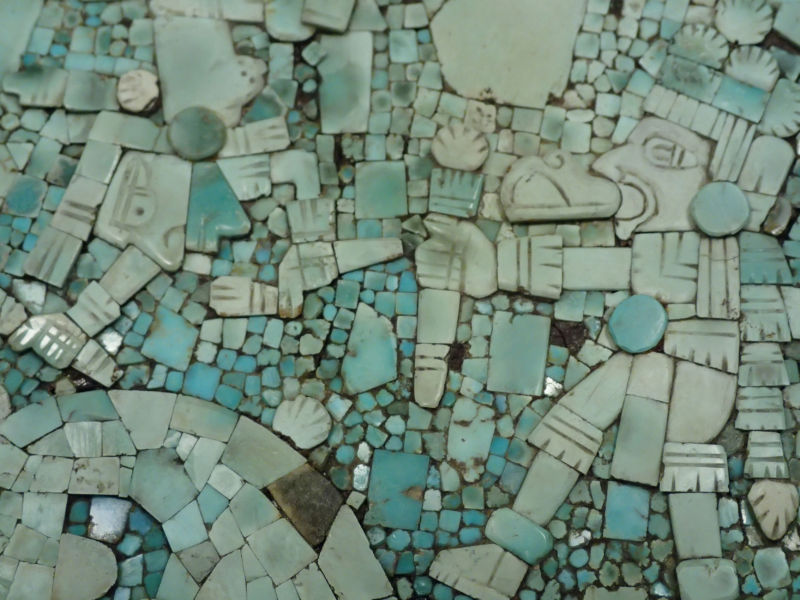New study rethinks pre-Columbian turquoise trade

Enlarge (credit: Alyson Thibodeau et al.)
New chemical analysis of Aztec turquoise artifacts suggests the stone didn't come from the Southwestern US as archaeologists have long thought, which raises questions about the scale of long-distance trade between the Aztecs and their northern neighbors.
For thousands of years, societies from Central America to the Southwestern US have prized turquoise for its unique blue-green color. Archaeologists and historians have assumed the Mesoamerican states got their turquoise via long-distance trade with people in the American Southwest. It made sense, because archaeologists have found macaw bones, cacao, and copper bells at sites around the Southwestern US-not in large quantities, but enough to show that at least some trade happened after 900 CE.
And there are still turquoise mines in the American Southwest in areas that have been mined since pre-Columbian times. Meanwhile, there are no turquoise mines in Mesoamerica, but there is an abundance of the stuff in Aztec artifacts. At the height of Aztec imperial power, known as the Late Postclassic period from 1430 to 1519, the stone was a favored ornament for ceremonial shields and sacrificial weapon hilts, mirrors, and jewelry. That includes items such as armbands, necklaces, earrings, and nose plugs worn by Aztec rulers, priests, and nobles. Turquoise-which the Aztecs called xihuitl-was so important that it had a role in Aztec cosmology and was often mentioned in poems.
Read 14 remaining paragraphs | Comments